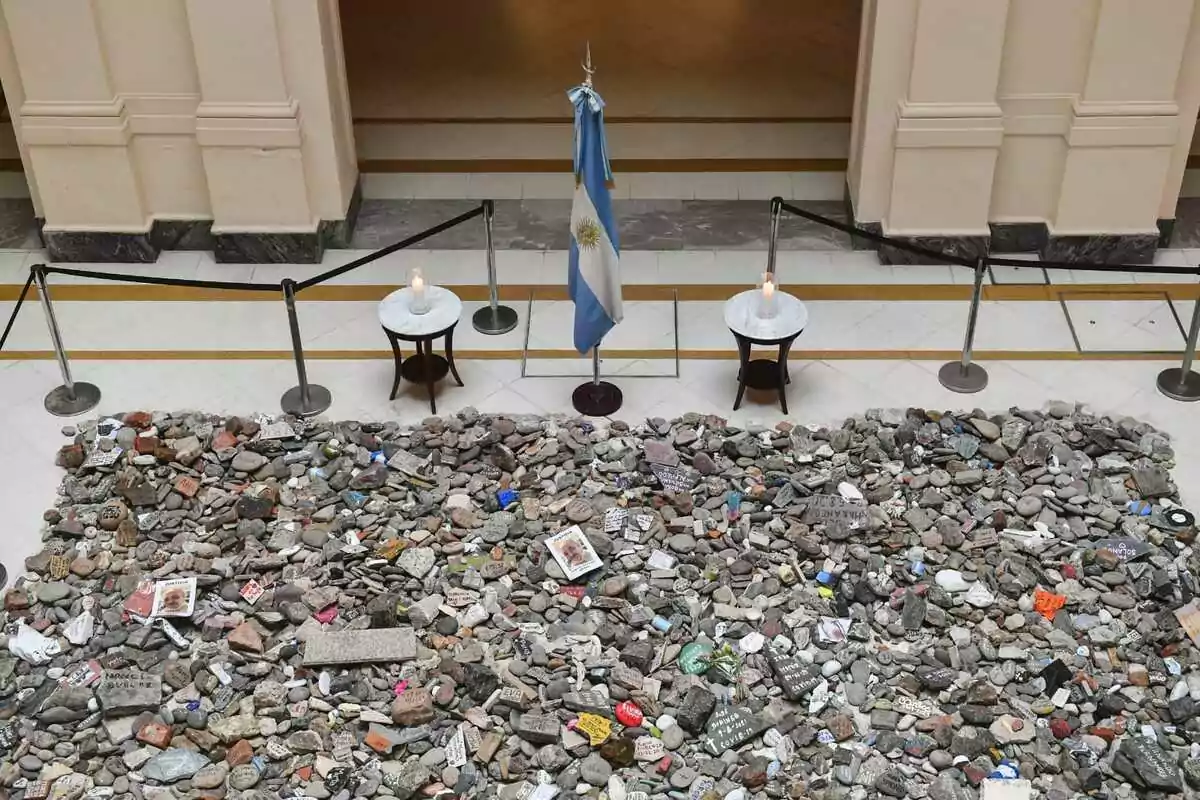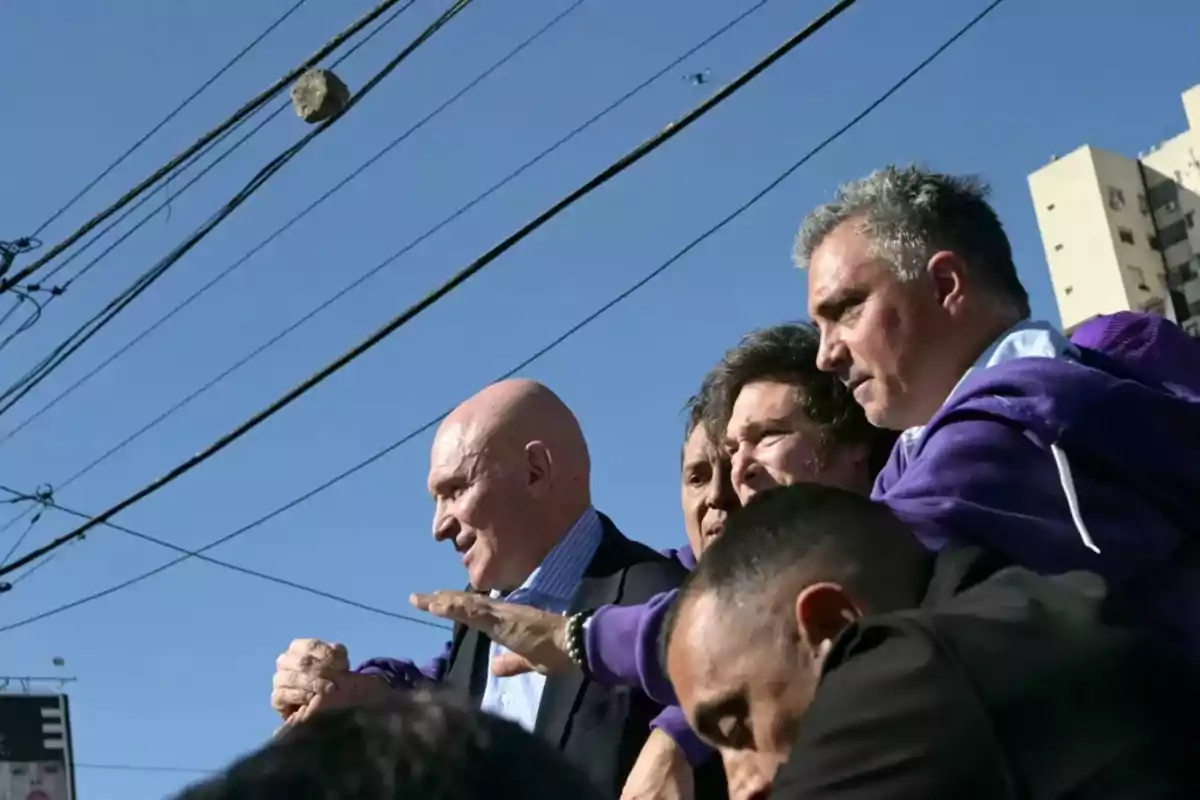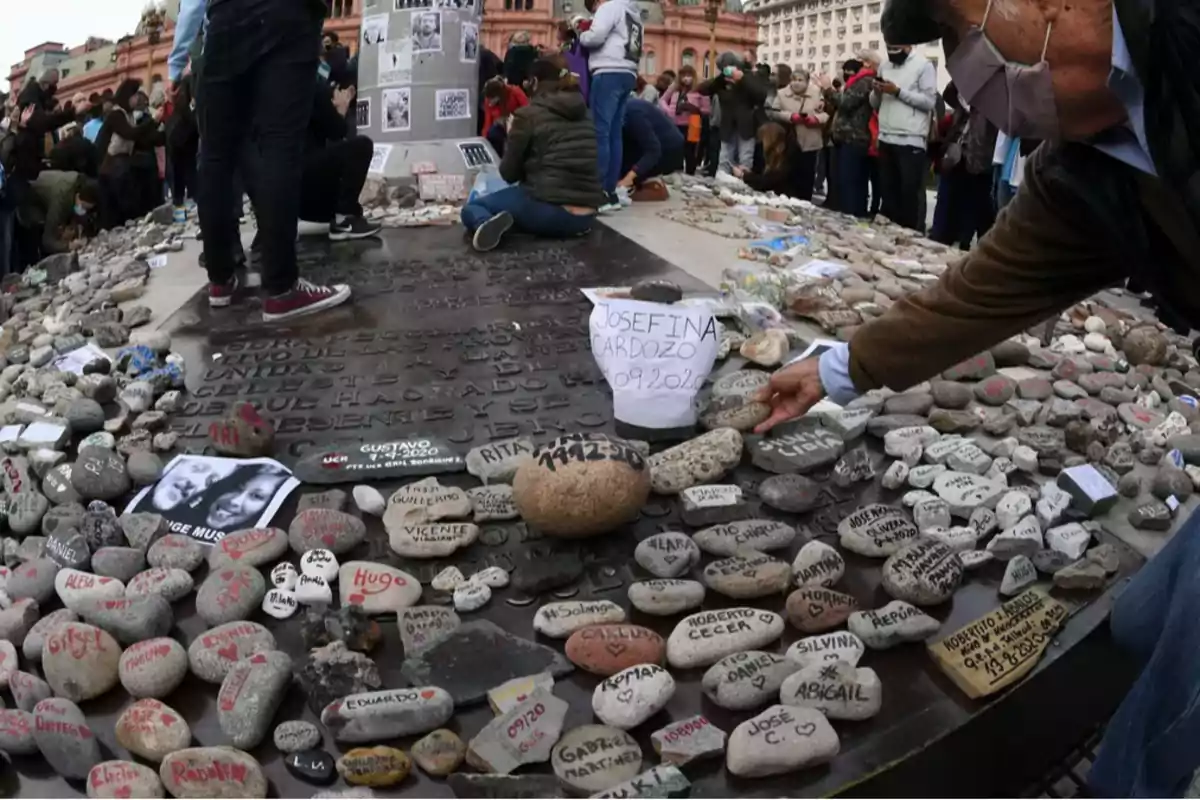
The Kirchnerist stones of hatred against Milei and the stones of the true people
While true people place stones of remembrance, Kirchnerism throws stones of organized hatred
Wednesday, August 27, 2025, will be remembered as one of the saddest and most revealing days in recent Argentine politics. Once again, Kirchnerism showed its most brutal and miserable face: street violence.
President Javier Milei's caravan in Lomas de Zamora was savagely attacked by a mob of Peronist activists who, unable to debate ideas, resorted to the method that defines them: stones, bottles, and violence against the people who decided to change course.
The images speak for themselves. A fanatical horde, incited by Kirchnerist activists, threw objects at the vehicle transporting the president and his entourage. There were injured people, detainees, and a security operation that had to evacuate Milei in an armored vehicle to preserve his life.

The contrast is stark: while the libertarian government calls for joyful caravans, with Argentine flags and hope for the future, Kirchnerism responds with stones, hatred, and the same resentment that has characterized them for decades. But stones have a history in Argentina. Not all stones are the same.
The people's stones
In Plaza de Mayo, in front of the Casa Rosada, since 2021 thousands of stones have lain, placed by the relatives of the victims of the pandemic. Each one bears a name, a date, a memory. They are stones of pain, memory, and justice.
They represent Argentines who lost their loved ones while then-president Alberto Fernández violated his own lockdown at the Quinta de Olivos, organizing clandestine parties, while the “committee of infectologists” imposed brutal restrictions, destroying the economy, education, and the mental health of millions.
Those stones are the silent cry of a betrayed people. They were not thrown in hatred; they were placed with love and mourning. They do not seek to hurt anyone, but to remember what the political power wanted to hide: that there were thousands of preventable deaths, that the endless lockdown was a social sentence, and that behind the health narrative lay corruption, the VIP vaccination scheme, and the impunity of the caste.

The stones in Plaza de Mayo are a tribute from the true people, who do not forget their dead and who demand justice for Alberto Fernández's criminal lockdown and the dictatorship of the infectologists led by Pedro Cahn.
The stones of Kirchnerist hatred
Meanwhile, the stones of Lomas de Zamora are the stones of organized hatred. They do not bear the names of victims, but partisan slogans. They do not seek to remember, but to silence. They are not born from the sincere pain of families, but from the violent machinery of Kirchnerism, which, when it can't win at the polls, tries to intimidate in the streets.
The attack against Milei was not an isolated or spontaneous event: it was a political act, planned and endorsed by the mayors of the suburbs who remain clinging to power. They tried to stop a popular caravan with the same weapons they used in December 2017 against Congress: stones against democracy, stones against freedom, stones against the Republic.
There lies the great difference: the people's stones in Plaza de Mayo are memory and tribute; Kirchnerism's stones in Lomas are aggression and barbarism.
The true people have already chosen
While the left, the unions, and the residual Peronism cling to violence, the Argentine people have already chosen another path. They chose freedom, they chose to leave behind planned misery, they chose Javier Milei to put an end to Kirchnerist plundering.
This is why the desperate violence. They know their narrative is over. They know their old slogans from the seventies no longer frighten anyone. They know that the people who filled Plaza de Mayo with stones in memory of their dead during the pandemic are the same people who now support the president who dared to say enough.

Kirchnerists throw stones at Milei because they can't stand to see a leader with genuine support, who doesn't fear them and who goes all out against the caste. But every stone they throw exposes them more. Every act of aggression reveals them for what they are: a violent minority, without ideas, clinging to hatred and lost privileges.
Two Argentinas
In today's Argentina, two symbols made of stone coexist:
- The stones of the true people, in Plaza de Mayo, which remember the victims of the pandemic and the criminal lockdown of Kirchnerism. Stones of memory, pain, and justice.
- The stones of violent Kirchnerism, thrown in Lomas de Zamora against the president elected by the people. Stones of hatred, resentment, and failure.
The difference is clear. Some stones honor the fallen; others seek to bring down those who rise. Some are born of love and remembrance; others, of violence and impotence.
The Argentine people have already decided which stones to keep. They are not the ones thrown by the violent. They are the ones that remember, the ones that weigh on the Nation's conscience, the ones that demand justice.
Because while Kirchnerism throws stones at the future, the true people place them to honor their dead and build memory. That is the people who will continue writing history.
More posts: